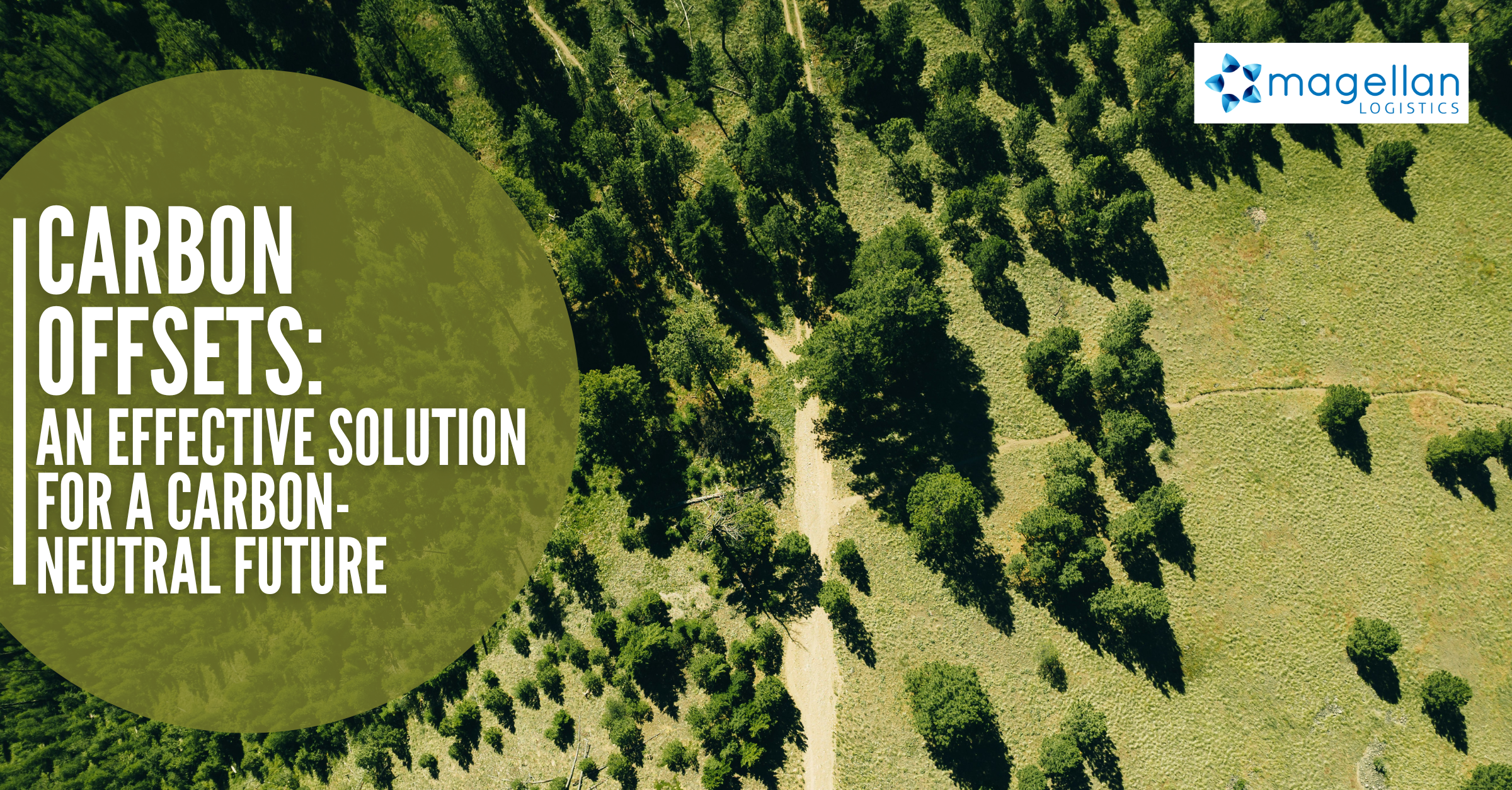In our quest for a carbon-neutral future, individuals and organisations alike are adopting strategies to minimise their carbon footprint and foster sustainable development. Carbon offsetting, a concept that’s becoming increasingly popular, offers a way to counterbalance greenhouse gas emissions, paving the way for a more sustainable world. Grasping the meaning of carbon offsetting is critical to understanding its role in curbing the effects of climate change and propelling us towards a world where carbon neutrality is the norm.
Understanding Carbon Offsets
What are Carbon Offsets?
Carbon offsetting is a compensatory mechanism, enabling individuals and organisations to balance their greenhouse gas emissions by investing in projects that reduce or absorb an equivalent amount of CO2 or other greenhouse gases. The core idea of carbon offset credits is to achieve an equilibrium where emission reductions in one area can neutralise emissions elsewhere, striving for a harmonious balance between emissions produced and mitigated.
How Does Carbon Offsetting Work?
The process of carbon offsetting involves the following steps:
- Calculating Carbon Footprint: Embarking on a carbon offsetting initiative begins with a thorough carbon footprint analysis. It’s essential to quantify both direct and indirect emissions from activities such as energy use, travel, and waste production to understand the full scope of one’s environmental impact.
- Selecting a Carbon Offset Project: Various carbon offset programs become available for selection after pinpointing the carbon footprint. These may range from renewable energy projects and reforestation efforts to energy efficiency enhancements and methane capture initiatives designed to reduce atmospheric carbon in meaningful ways.
- Purchasing Carbon Credits: Investing in carbon offsets means purchasing credits representing the GHG emissions an individual or organisation aims to neutralise. These carbon offset credits are only granted to certified projects that comply with strict standards, ensuring that each investment contributes to genuine environmental benefits.
- Monitoring and Verification: Ensuring transparency and accountability is paramount throughout the carbon offsetting process. Independent third-party entities rigorously verify the emission reductions claimed by carbon offset projects, solidifying the trustworthiness and impact of the carbon offset credits.
- Reporting and Certification: By acquiring carbon offsets, entities can proudly report their strides towards carbon neutrality. Endorsing certification standards like the Gold Standard or Verified Carbon Standard lends weight to these claims, showcasing a genuine dedication to environmental stewardship and carbon-neutral certified achievements.
What is a Carbon Credit?
A carbon credit is a financial instrument with a specific environmental focus. This instrument is designed to represent a ton of carbon dioxide (CO2), or an equivalent amount of a different greenhouse gas (GHG), successfully removed from the atmosphere, avoided from being released or effectively sequestered. This action primarily aims to compensate for emissions produced elsewhere, often by industrial or other human activities.
This concept of carbon credits is part of a broader, international effort to mitigate the steady increase in greenhouse gas concentrations in the Earth’s atmosphere. This global initiative is driven by the urgent need to combat the escalating issue of climate change, which poses significant threats to our planet’s ecosystems and human societies.
Various entities, including companies, governments, and other organisations, can purchase these carbon credits. The reasons for doing so are twofold. Firstly, they can use these credits to offset their greenhouse gas emissions, effectively balancing their environmental impact and becoming carbon-neutral. Secondly, they can use these credits to comply with specific regulations or caps on the carbon dioxide they are legally permitted to emit.
The sale of carbon credits serves another vital function. It provides financial incentives for reducing greenhouse gases in several key sectors. These sectors include renewable energy, focusing on harnessing power from sustainable sources such as wind, solar, and hydroelectric power. They also include energy efficiency, which reduces energy consumption and waste. Finally, they include reforestation projects, which aim to restore and preserve forests as vital carbon sinks. In this way, the carbon credit system helps reduce greenhouse gas emissions and promotes sustainable practices and industries.
The Impact of Carbon Offsetting
Advantages of Carbon Offsetting
Carbon offsetting offers several advantages in the fight against climate change:
- Emission Reduction: By engaging in carbon reduction strategies, individuals and organisations significantly contribute to curbing greenhouse gas emissions and become carbon-neutral. These initiatives are vital in balancing the environmental impact of various activities and promoting greener industries.
- Promoting Sustainable Development: Sustainable development is often at the heart of carbon offset projects prioritising local community growth. Through reforestation efforts, these initiatives not only aid in sequestering carbon but also bolster economic development, safeguard biodiversity, and enhance the health of ecosystems.
- Encouraging Innovation: Carbon offsetting acts as a catalyst for advancing and adopting innovative, clean technologies and sustainable solutions. This approach is instrumental in driving research and investment towards renewable energy and energy efficiency, paving the way for a greener future.
- Raising Awareness: Participation in carbon offsetting programs underscores the importance of achieving carbon neutrality and fostering environmental stewardship. Such initiatives serve as a clarion call for individuals and organisations to acknowledge their carbon footprint and transition towards more sustainable practices.
Criticisms and Limitations
While carbon offsetting is hailed as a viable approach to environmental conservation, it is essential to recognise its critics and limitations in the broader context of climate change mitigation.
- Offsetting as a Substitute: Detractors of carbon offsetting caution against viewing it as an alternative to direct emission reduction efforts. They stress the urgency of prioritising systemic changes and proactive measures to tackle the fundamental drivers of climate change.
- Additionality and Permanence: The principle of ‘additionality’ is a cornerstone in carbon offset projects, asserting that these projects must lead to emission reductions that would not have occurred otherwise. Equally essential is the concept of ‘permanence,’ which ensures that achieved environmental benefits are sustained over time, preventing any rollback of progress.
- Quality and Transparency: The quality and transparency of carbon offset projects are critical. Ensuring adherence to recognised standards and protocols is essential to confirm that the offsets contribute to genuine and measurable emissions reduction.
- Scope and Scale: Addressing the global climate crisis requires more than just carbon offsetting; it demands emissions reduction across all sectors and systemic changes. The scalability and effectiveness of carbon offsetting should be evaluated as part of comprehensive climate mitigation strategies.
Carbon Offsetting Initiatives
Types of Carbon Offset Projects
Carbon offset projects come in various forms, each with its unique environmental benefits:
- Renewable Energy Projects: Investing in renewable energy projects, including wind farms and solar power plants, is pivotal in supplanting fossil fuel-based electricity and significantly reducing greenhouse gas emissions.
- Reforestation and Afforestation: Tree planting and reforestation initiatives do more than sequester carbon dioxide; they are also instrumental in bolstering biodiversity, curbing soil erosion, and enhancing water quality.
- Energy Efficiency Programs: Adopting energy efficiency measures in buildings, industries, and transportation systems is a proven strategy to cut energy consumption and curb emissions.
- Methane Capture and Destruction: Targeted projects that capture and eliminate methane emissions from landfills, agricultural practices, or industrial processes are vital in preventing this potent greenhouse gas from entering the atmosphere.
Certification Standards and Organisations
To uphold the integrity and credibility of carbon offset projects, various certification standards and organisations are indispensable.
- Gold Standard: The Gold Standard is a globally acknowledged certification that ensures high-quality carbon offsets. It focuses on emissions reduction and champions sustainable development under the banner of The Gold Standard.
- Verified Carbon Standard: The Verified Carbon Standard, another esteemed certification, validates and certifies carbon offset initiatives. It offers a comprehensive framework for measuring, reporting, and verifying emissions reductions, aligning with The Verified Carbon Standard’s stringent criteria.
- Climate Action Reserve: Operating in North America, The Climate Action Reserve is a nonprofit entity dedicated to developing and managing carbon offset projects. It upholds rigorous standards and best practices, ensuring projects align with The Climate Action Reserve’s commitment to quality.
Carbon Offset Market and Pricing
Fueled by the growing demand for eco-friendly initiatives, the carbon offset market has seen considerable expansion, signalling a shift towards more sustainable solutions.
- Market Dynamics: Governing the carbon offset market, the principle of supply and demand comes into play as the quest to neutralise emissions drives the need to diversify projects and escalate investment.
- Pricing and Cost: Fluctuating with project specifics, certification requirements, and market dynamics, the cost of carbon offsets is currently pegged between $3 to $5 per metric ton of CO2 equivalent, but can range beyond that. With surging demand, these figures are poised to climb in the foreseeable future.
- Voluntary and Compliance Markets: Carbon offsets find their place in both voluntary markets, where emission compensation is a choice for entities and individuals, and in compliance markets, where regulatory frameworks enforce emission reductions.
The Future of Carbon Offsetting
Carbon Offsetting and Sustainable Development Goals
Carbon offsetting is closely aligned with the Sustainable Development Goals (SDGs) set forth by the United Nations, which include:
- Goal 7: Affordable and Clean Energy: Investing in renewable energy projects is a key aspect of carbon offsetting, contributing to a sustainable future and cleaner energy landscape.
- Goal 13: Climate Action: Playing a pivotal role in the battle against climate change, carbon offsetting is essential for meeting the objectives of the Paris Agreement.
- Goal 15: Life on Land: Reforestation and afforestation efforts, bolstered by carbon offsetting initiatives, are vital for the protection and rejuvenation of terrestrial ecosystems, thereby safeguarding biodiversity.
Advancing Carbon Offsetting Efforts
To maximise the impact of carbon offsetting, several areas warrant attention and action:
- Enhanced Standards and Transparency: The continuous enhancement of certification standards and the implementation of stringent transparency measures are critical for maintaining the trustworthiness and impact of carbon offset projects.
- Innovation and Collaboration: Fostering innovation and collaboration across various industries is instrumental in developing new technologies and methods that further cut emissions and boost the scalability of carbon offsetting.
- Policy Support: Governments and regulatory bodies have an indispensable role in advancing carbon offsetting through the enactment of supportive policies, offering incentives, and establishing ambitious goals for emissions reduction.
- Education and Awareness: Elevating awareness about carbon offsetting and its potential benefits is crucial for encouraging widespread adoption and active participation. Educational initiatives must emphasise the significance of individual and collective action in addressing climate change.
The Role of Individuals and Organisations
Every individual and organisation has a role to play in advancing carbon offsetting efforts:
- Individual Actions: Using a carbon calculator, individuals can assess their carbon footprint, adopt energy-efficient practices, and support renewable energy to reduce emissions. Additionally, they can compensate for their remaining emissions through certified projects, which might involve reducing travel-related emissions.
- Corporate Responsibility: Organisations should integrate sustainability and carbon-neutral objectives into their corporate social responsibility programs. This commitment includes measuring and diminishing emissions, engaging in carbon offsetting, and communicating their sustainability journey transparently.
- Collaboration and Partnerships: Fostering cooperation between individuals, organisations, and governments is pivotal for hastening the adoption of carbon offsetting and instigating systemic change for a sustainable future. Such partnerships are instrumental in sharing knowledge, spurring innovative solutions, and achieving a collective impact.
What is carbon-neutral shipping?
Carbon-neutral shipping is a forward-thinking, eco-friendly strategy aimed at balancing out the CO2 emissions produced while transporting goods. This meticulous process entails a comprehensive assessment of the total CO2 emissions from shipping activities.
After precisely measuring these emissions, the subsequent phase neutralises them through various carbon offsetting methods. These strategies are manifold, including investments in renewable energy projects like wind power and solar power initiatives that curtail dependency on fossil fuels and decrease CO2 emissions.
Supporting reforestation projects is another impactful carbon offsetting approach. These initiatives are geared towards CO2 absorption, leveraging the natural process where trees absorb carbon dioxide and emit oxygen, thereby making reforestation a potent means to counterbalance carbon emissions.
Participating in energy efficiency initiatives is a proactive approach to sustainability. These initiatives often involve adopting energy-saving technologies or implementing practices that significantly reduce energy consumption, promoting a greener lifestyle.
Businesses can attain carbon-neutral shipping by offsetting emissions with measures that eliminate or prevent an equivalent amount of greenhouse gases. This method is instrumental in diminishing the environmental footprint of shipping and propels the logistics and transportation industry towards more eco-friendly operations. It underscores every sector’s vital contribution to combat climate change and reinforces the notion that every action, regardless of size, contributes to the collective effort.
How much does it cost to offset my freight emissions?
Several key factors are considered to ensure the mitigation efforts’ effectiveness when offsetting freight carbon emissions. Firstly, the type of freight being transported (such as perishable goods, electronics, etc.) plays a crucial role, as different goods may require different modes of transportation and packaging, influencing the overall emissions. Secondly, the mode of transportation (air, sea, road, or rail) is a significant factor due to the varying carbon footprints associated with each mode. Thirdly, the distance travelled directly impacts the emissions produced, with longer distances generally resulting in higher emissions. Another important consideration is the fuel efficiency of the transport vehicles, as more fuel-efficient cars emit less CO2 per mile travelled.
Additionally, the load efficiency, which refers to how full the transport vehicle is, also affects emissions per unit of goods transported. Lastly, carbon offset projects chosen for investment are critical; these projects should be credible, verifiable, and capable of making a real difference in carbon reduction, such as reforestation or renewable energy projects. Together, these factors help ensure that efforts to offset freight carbon emissions are both meaningful and effective.
Embracing a Sustainable Future
Carbon offsetting is a cornerstone in the quest for a sustainable future. By grasping this concept, participating in accredited projects, and championing systemic reform, individuals and entities can play a part in shaping a carbon-neutral world resilient to the effects of climate change. Integrating carbon offsetting into a broader sustainability strategy represents a concrete move towards securing a thriving planet for future generations.
Offset the carbon emissions associated with your shipping today.
Through our partnership with Tasman Environmental Markets, Magellan offers our clients a way to measure and offset their carbon emissions from freight in three simple steps and a range of offset projects to suit their budgets and strategic considerations.
Get in touch with me via david@maglog.com.au or AUS 1300 651 888, or if you’re in NZ, contact Jeff Bozich via jeff.b@maglog.co.nz or NZ +64 9 974 4818
Please note that the information provided in this article is for informational purposes only and should not be considered as financial or legal advice. Individuals and organisations should consult with professionals before engaging in any carbon offsetting activities.













